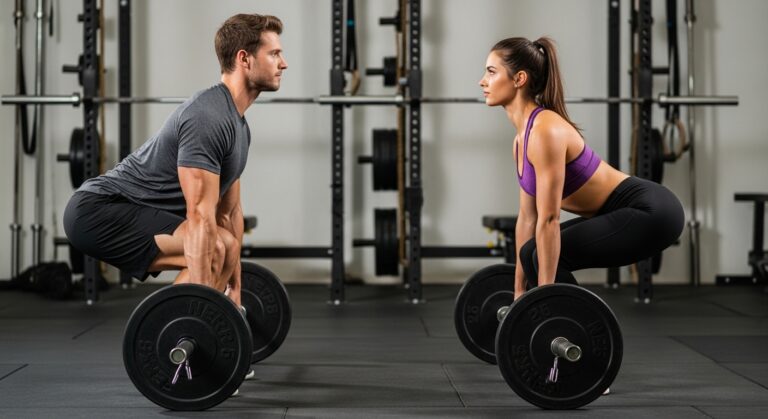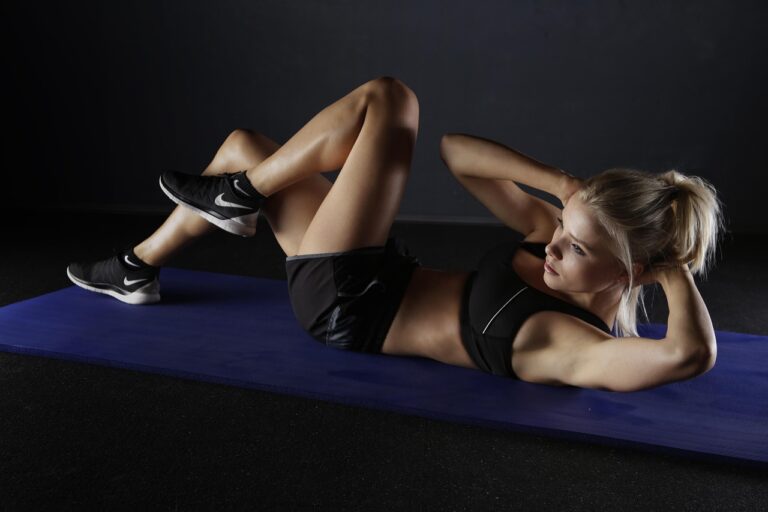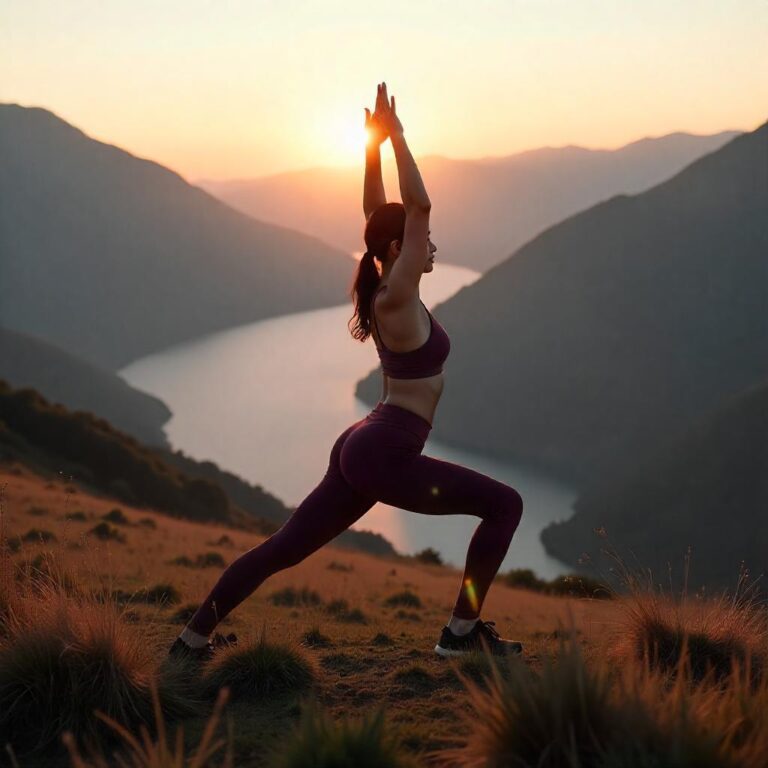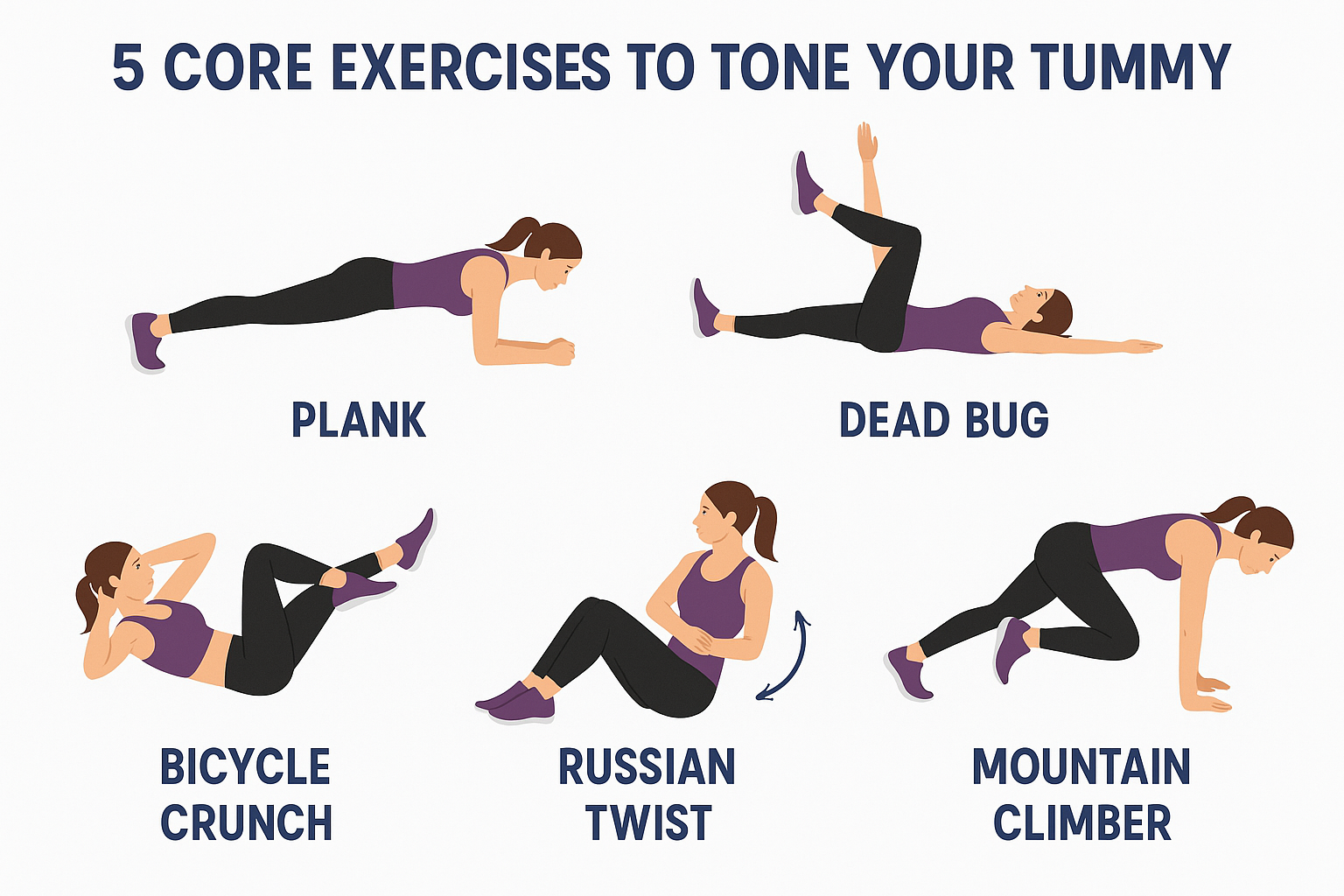Squats and Lunges: Your Ultimate Guide to Stronger, Toned Legs
Squats and lunges are two of the most powerful bodyweight exercises for building lower-body strength, toning your legs, and enhancing functional fitness. Whether you’re at home or in the gym, these exercises can help transform your body without the need for equipment.
Let’s dive into everything you need to know, from benefits and technique to FAQs and sample routines.
Why Squats and Lunges Should Be Your Go-To Leg Moves
Top Benefits
- Activate glutes, quads, hamstrings, and calves
- Boost core stability and balance
- Help burn fat and tone the lower body
- Improve athletic performance and daily movement
- Strengthen joints and prevent injury
These exercises are not just about looks; they’re functional movements that carry over into real life.
Squats vs. Lunges: What’s the Difference?
| Feature | Squats | Lunges |
|---|---|---|
| Type | Bilateral (both legs at once) | Unilateral (one leg at a time) |
| Balance Required | Low | High |
| Target Focus | Quads, glutes, hamstrings | Glutes, quads, inner thighs |
| Best For | Strength, muscle mass | Stability, muscle symmetry |
Which is better?
Both are excellent. Use squats for building strength, and lunges to correct imbalances and improve control.
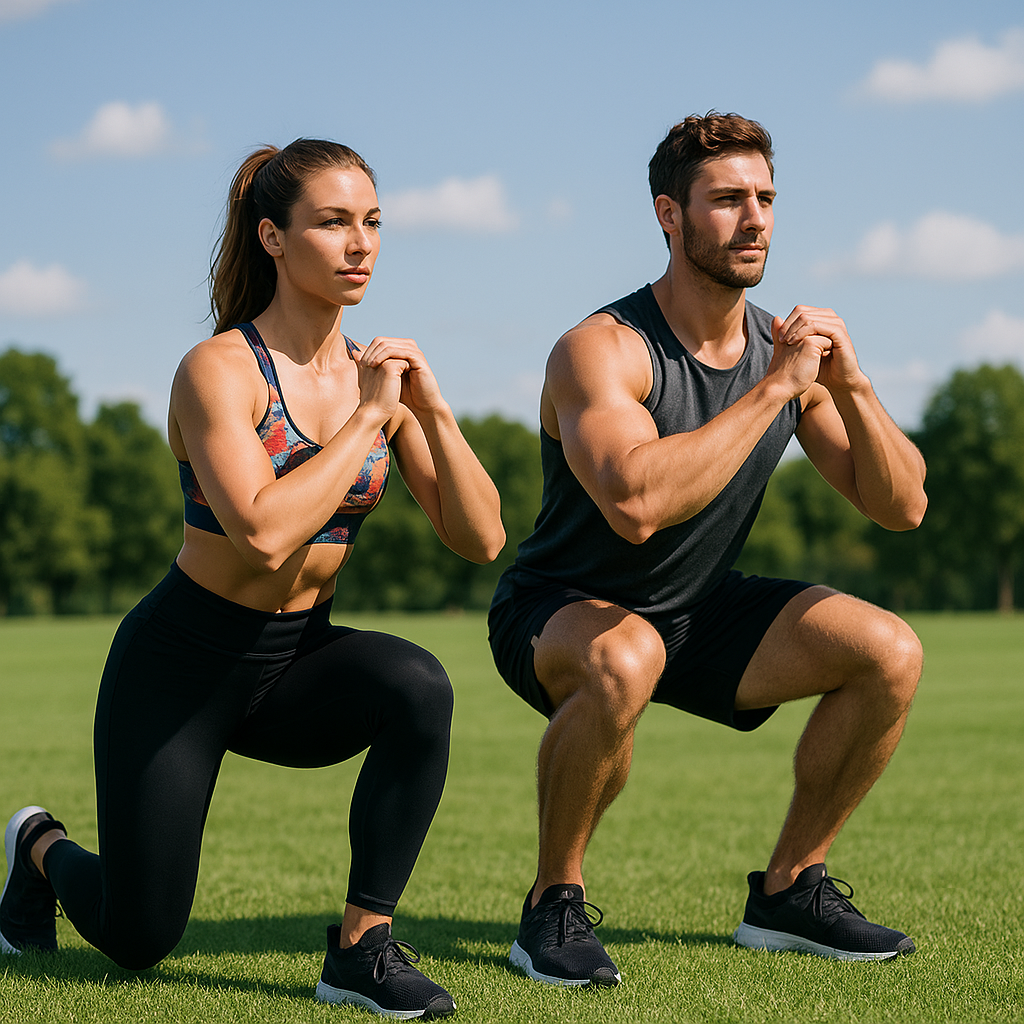
Mastering the Form: How to Do Squats and Lunges Correctly
Proper Squat Form
- Stand with feet shoulder-width apart
- Keep your chest up and core engaged
- Push hips back and bend knees to 90°
- Press through heels to return up
Proper Lunge Form
- Step one leg forward, bend both knees to 90°
- The front knee stays above the ankle
- Back knee hovers just above the floor
- Push off the front heel to return
Common Mistakes to Avoid
- Knees caving inward
- Leaning too far forward
- Lifting heels off the ground
- Rushing through reps
Tip: Wear flat, stable shoes to protect knees and ankles during lower body exercises.
Variations to Keep It Fresh
Squat Variations
- Sumo squat (targets inner thighs)
- Goblet squat (add weight)
- Jump squat (cardio & power)
- Wall squat (great for beginners)
Lunge Variations
- Reverse lunge (knee-friendly)
- Walking lunge (builds endurance)
- Lateral lunge (hits inner thighs)
- Plyometric lunge (advanced explosiveness)
7-Day Bodyweight Squat & Lunge Routine
| Day | Exercise | Sets × Reps |
|---|---|---|
| Monday | Bodyweight squats + walking lunges | 3 × 15 each |
| Tuesday | Reverse lunges + jump squats | 3 × 12 each |
| Wednesday | Rest or light walk | – |
| Thursday | Side lunges + wall squats | 3 × 10 each |
| Friday | Sumo squats + step-back lunges | 3 × 15 each |
| Saturday | Full-body HIIT (include squats/lunges) | 4 × 20 sec intervals |
| Sunday | Rest or stretching | – |
Start with bodyweight only. As you progress, add dumbbells or resistance bands.
Are Squats and Lunges Enough for Leg Day?
Short answer: They’re a solid foundation, especially for beginners or those training at home.
But for complete leg development, include:
- Hip thrusts
- Step-ups
- Deadlifts
- Calf raises
Related question: “Can squats and lunges replace cardio?”
Not fully. They elevate heart rate, but for full cardio benefit, include walking, cycling, or HIIT.
Final Thoughts
If you’re looking to get leaner, stronger, and more athletic, start with squats and lunges. No gym? No problem. These bodyweight moves are all you need to reshape your legs, boost balance, and burn calories.
Add variety. Focus on form. Stay consistent.
Your legs will thank you.
FAQs: Quick Answers to Common Questions
Q1: Which muscles do squats and lunges work?
A: Glutes, quads, hamstrings, calves, and your core.
Q2: Are squats or lunges harder?
A: Lunges: they challenge balance and activate stabilizers more.
Q3: Can I do them every day?
Yes, but alternate intensity levels. Avoid overtraining.
Q4: Which one is better for toning legs?
Both are effective. Lunges offer more unilateral control, leading to better leg definition.
Q5: Are there any knee-friendly options?
Try:
- Reverse lunges
- Wall sits
- Box squats
Q6: What do squats and lunges do?
Squats and lunges strengthen your lower body by targeting the glutes, quads, hamstrings, and calves.
They also improve balance, mobility, and core stability. These functional movements enhance athletic performance, support joint health, and help burn calories effectively.
Q7: Can I do lunges and squats together?
Yes, combining squats and lunges in your workout gives you a more balanced lower-body routine.
Squats build overall leg and glute strength, while lunges correct muscle imbalances and improve stability. Doing both improves strength symmetry and reduces injury risk.
Q8: What are the benefits of squats?
Squats offer full lower-body engagement and core activation.
Key benefits include:
- Increased leg and glute strength
- Improved posture and mobility
- Boosted calorie burn
- Better athletic performance
- Stronger bones and joints
Squats are also highly adaptable; you can progress with weights, resistance bands, or variations.
Q9: What happens if I do squats and lunges every day?
Daily squats and lunges can build endurance and muscle tone, but rest and variation are key.
Without proper recovery, you may risk overtraining or joint stress. If you choose daily workouts:
- Vary intensity and reps
- Alternate muscle groups
- Focus on form and mobility
- Include active rest days
For most people, 3–5 sessions per week with recovery is ideal.
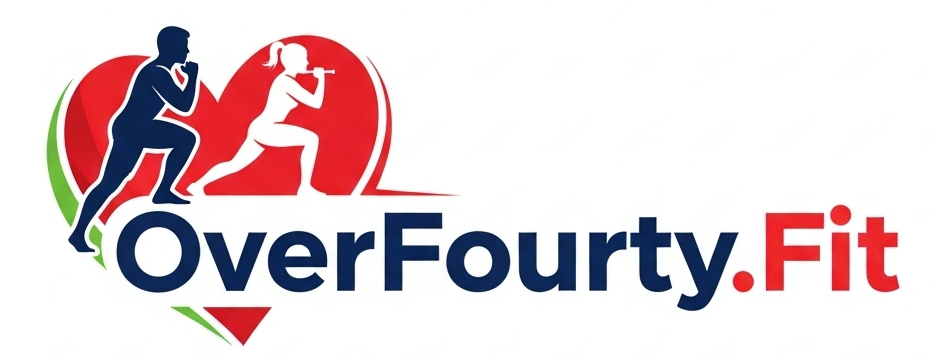
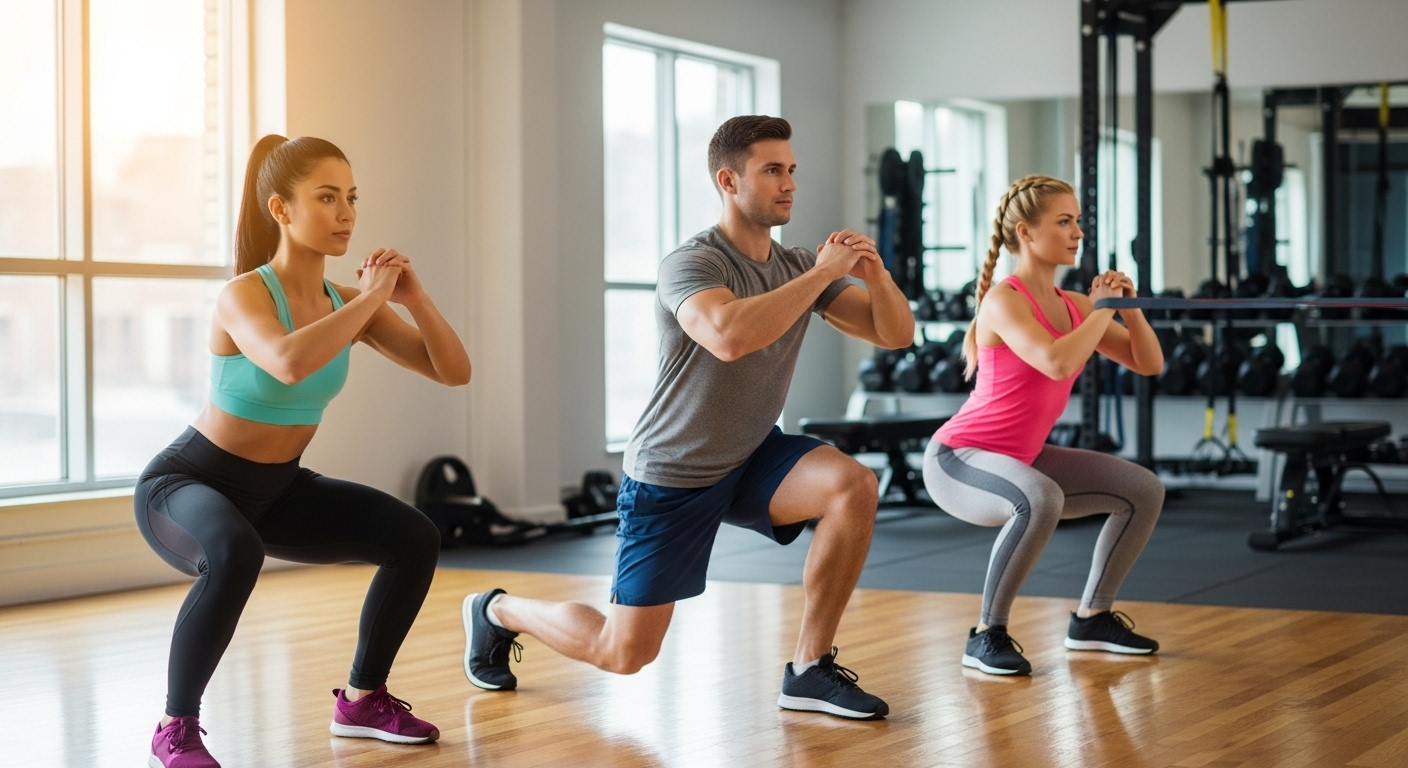
![EoS Fitness 2025: Best Gym Membership for [Arizona/Florida/Texas] 3 EoS Fitness](https://overfourty.fit/wp-content/uploads/2025/05/EoS-Fitness-1-768x512.jpg)
